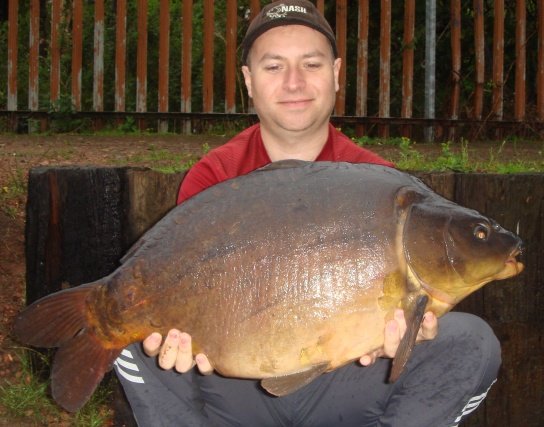Why Do Carp Follow the Wind?
Many anglers are aware that carp tend to follow the wind, but why exactly, and what advantages do carp get from the wind?
A carp has some very basic needs. They require nutrition from food and oxygen in order to sustain life, but they also need to feel safe. These are amongst the most important needs for carp and a strong wind can help pull these basic needs together in abundance in one of the water mass.
The Wind Affects Underwater
Many food items will be picked up by wind-produced water currents and pushed towards the windward bank. Although, it’s usually the case that the majority of these are tiny food particles, and these by themselves may not actually attract the carp as they’re too small. It is more likely that the food particles attract other, aquatic insects and small predators towards the windward bank, and it’s these that carp are attempting to find freely when they follow the wind. Carp will prefer these bigger food items as they are more filling and can provide them with greater nutrition and a higher energy content. Plus they are a more natural food item, and thus are likely to be deemed as safe to eat when their lake is full of carp hunting anglers!
The wind provides greater oxygen concentrations in the water so carp can breathe easier. If the water is oxygen-rich, the fish will feel comfortable and more likely to increase activity around that area resulting in a greater demand for food. Therefore, it could be the case that they're more likely to feed at the windward bank.
The wind also affects the temperature of the water. At certain times of the year carp will benefit from these temperature changes. For instance during a hot summer, a cooler wind may attract carp to the windward bank probably more than a warm wind would do. This may be because very warm waters can make carp feel lethargic and thus they may feel more comfortable to follow cooler winds in hot summer periods. In the winter, on the other hand, a warm wind would suit carp more and they will naturally follow a warm wind, unless there is a strong sunshine directly on shallow waters that happens to be at the opposite end from the wind.
Another affect of a strong wind on a lake is the disturbance of the water at the windward bank. This clouds the water and helps to provide carp with more cover so they feel a little safer. This is especially more so in clear water, pressured lakes where carp may feel safer from any type of cover or camouflage. I also believe that the ripple on the surface caused from a consistent wind, may help dull the light levels underwater. Maybe this helps carp feel safer and less vulnerable during the day.
So a strong wind potentially provides:
- Food
- Oxygen
- Comfortable temperatures
- Cover
Will All Big Carp Follow Any Wind?
Some lakes are not as affected by the winds and as a result, the carp won’t always be located at the windward end. I believe this may have something to do with the makeup of the lake and how the wind affects the biology under water. It has been suggested that a smaller lake, which has lots of islands, tree coverage or various other features, can break the wind flow and doesn't allow it to affect the biology as much as on larger waters, thus carp may not be inclined to follow the wind on small pools and ponds.
Furthermore, a lake containing lots of weed may not have the same underwater effects when the wind blows. This could be because the weed can provide plenty of oxygen for the carp, as well as ample supplies of natural food items. The weed can further provide some shelter for carp to hide away out of angler’s sight and fishing lines. This means there’s less need for carp to follow the wind when a lake contains plenty of weed.
As a general rule, I have always preferred to fish in the wind when it’s blowing from any West or South directions. If the wind is cold and blowing from the East or North direction, then I prefer to fish for carp on the back of the wind. Some anglers may disagree with this, but I only use it as a general guide. In some lakes, the fish may have naturally followed the wind for years, and from any direction, but consistent angling pressure on the windward bank may force the bigger fish to feed in other, safe areas. As a carp angler, we need to learn this kind carp behaviour on our regular waters if we wish to catch more large carp!
Locating Big Carp in the Spring
Carp Location in the Summertime
Finding Large Carp in the Cold Winter
Location of Most Carp in Autumn
The Case for Quality Carp Bait
Fishing Tactics for Snags & Trees
Boilie Placement on the Hair rig
Different types of carp rigs to use
A Carp's Digestive System in Detail
Ingredients used in Common Carp Baits
Common Baiting Tactics When Fishing
The Various Carp Bait used to Catch Bigger Carp
When to use Pop-ups or Bottom Bait for Carp Fishing
How to complete a Baiting Campaign on Lakes & Ponds
The Basic Carp Fishing Baits Used to Catch Large Carp
Fishing Tactics when Fishing for Carp during Long-stay Sessions
